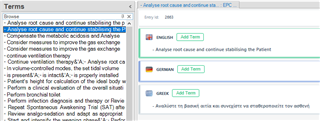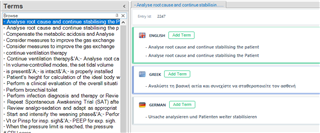I have two tables, one containing English and German and the other containing English and Greek.
Both were converted to SDLTB via Glossary Converter. I then exported the TBs to xml, created a new one EN-GE-GR, imported EN-GE and then created an import model to synchronize on English term, adding new and merging existing entries. The result is bad–I have two glossaries in one. English terms are all duplicated and show either GE or GR as target, but not both. In previous versions this method worked and I received a glossary with EN-GE-GR. What am I doing wrong now?
I attacEPC.ziph the Excel files here.
_________________________________________________________
When asking for help here, please be as accurate as possible. Please always remember to give the exact version of product used and all possible error messages received. The better you describe your problem, the better help you will get.
Want to learn more about Trados Studio? Visit the Community Hub. Have a good idea to make Trados Studio better? Publish it here.

 Translate
Translate





